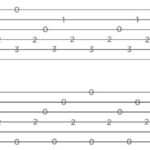The bass guitar, often simply called the “bass,” is a cornerstone of modern music, laying down the rhythmic and harmonic foundation across countless genres. Resembling an electric guitar but boasting a lower sonic register, the bass guitar traditionally features four strings and rose to prominence in the 20th century, thanks to pioneering musicians who recognized its profound sonic possibilities. Icons like James Jamerson and Bootsy Collins championed the electric bass, propelling music into uncharted territories with its rich, deep frequencies. But where did this influential “Bass Guitar Instrument” truly begin?
The Genesis of Deeper Sounds
The quest for a louder, deeper-toned guitar predates the bass guitar as we know it. In the 1920s, George Beauchamp sought an instrument that could project a more profound sound than standard guitars and string instruments. His ambition was to create an instrument with enhanced depth and the ability to sustain lower pitches effectively. This pursuit led him to groundbreaking inventions, including the electric guitar, electric violin, and lap steel guitar – laying the groundwork for future innovations in amplified instruments.
However, the direct ancestor of the “bass guitar instrument” emerged in the 1930s, thanks to Paul Tutmarc. He innovated by creating a horizontally played version of the double bass, an instrument traditionally played upright. Tutmarc’s creation captured the essence of the modern bass guitar’s form and playing style. Remarkably, only around 100 of these pioneering instruments were crafted in the 1930s, marking a niche but significant beginning. Throughout the 1930s and 1940s, various prototypes and models of bass guitars continued to surface, each contributing to the instrument’s evolutionary journey.
The true breakthrough for the “bass guitar instrument” came in the early 1950s when Leo Fender introduced the first commercially successful electric bass guitar in the United States. Fender’s model became the blueprint for the widely adopted and commercialized electric bass guitar that revolutionized 20th-century music. His design and marketing acumen cemented the bass guitar’s place in musical history.
 Leo Fender's electric bass guitar revolutionized 20th-century music, paving the way for modern bass instruments.
Leo Fender's electric bass guitar revolutionized 20th-century music, paving the way for modern bass instruments.
From Double Bass to Electric Bass: A Sonic Evolution
Historically, bass guitars have branched into two main types: the solid-body electric bass and the acoustic hollow-body version. The electric bass, characterized by its heavy strings and low-pitch tuning, addressed a significant limitation of its predecessor, the double bass. Before the advent of the “bass guitar instrument,” bands relied on the large and cumbersome double bass, an instrument resembling a cello that originated in 15th-century Europe.
Double basses, while rich in tone, presented practical challenges. They were difficult to transport and often lacked the volume needed to compete with louder instruments, particularly in emerging genres that favored amplification. The need for a more portable, louder instrument with a deep pitch that could sonically contend with the electric guitar became increasingly apparent. This demand spurred the rapid rise in popularity of the bass guitar across diverse musical genres. The “bass guitar instrument” offered a solution, combining portability with powerful low-end frequencies.
The Bass Guitar in Music: From the 1950s to Today
Leo Fender’s popularization of the bass guitar marked a turning point, initiating its profound impact on pop culture and music. The late 1950s saw jazz musician Monk Montgomery among the first to perform publicly with a bass guitar, showcasing its versatility in jazz.
A pivotal moment arrived in 1961 with Rickenbacker’s release of the 4001 model. This iconic electric bass guitar became synonymous with Paul McCartney of The Beatles, further cementing the instrument’s place in popular music.
Throughout the 1970s and 1990s, the “bass guitar instrument” continued to evolve in design and recognition. Jazz and rock bands increasingly traded their traditional upright basses for electric versions, a shift that permeated nearly every genre. This “going electric” movement was largely driven by the electric bass guitar. It offered not only a more contemporary sound but also improved portability and a wider tonal palette compared to the double bass.
From funk to hip-hop, artists across genres embraced the unique sonic qualities of the bass guitar. It moved from a supporting role to center stage, captivating audiences with its deep, resonant tones. Jazz ensembles began featuring bass guitar solos, while rock bands utilized it to amplify the impact of percussion, highlighting the “bass guitar instrument”‘s growing prominence.
The “bass guitar instrument” underwent further modernization from the 1970s to the 1990s, adapting to the evolving needs of the music industry. New genres emerged, maximizing the bass guitar’s potential. Techniques like slap bass and genres like disco showcased the instrument’s transformative influence on music.
Today, the bass guitar is indispensable in virtually every band and musical style. Its deep, foundational sounds are readily heard in contemporary pop, hip-hop, funk, and metal tracks, underscoring its lasting legacy as a vital “bass guitar instrument.”
For those passionate about deepening their connection with the bass guitar, numerous resources exist to refine skills and nurture talent. Whether through formal programs or self-guided learning, the journey of mastering the “bass guitar instrument” is a rewarding pursuit for any aspiring musician.

